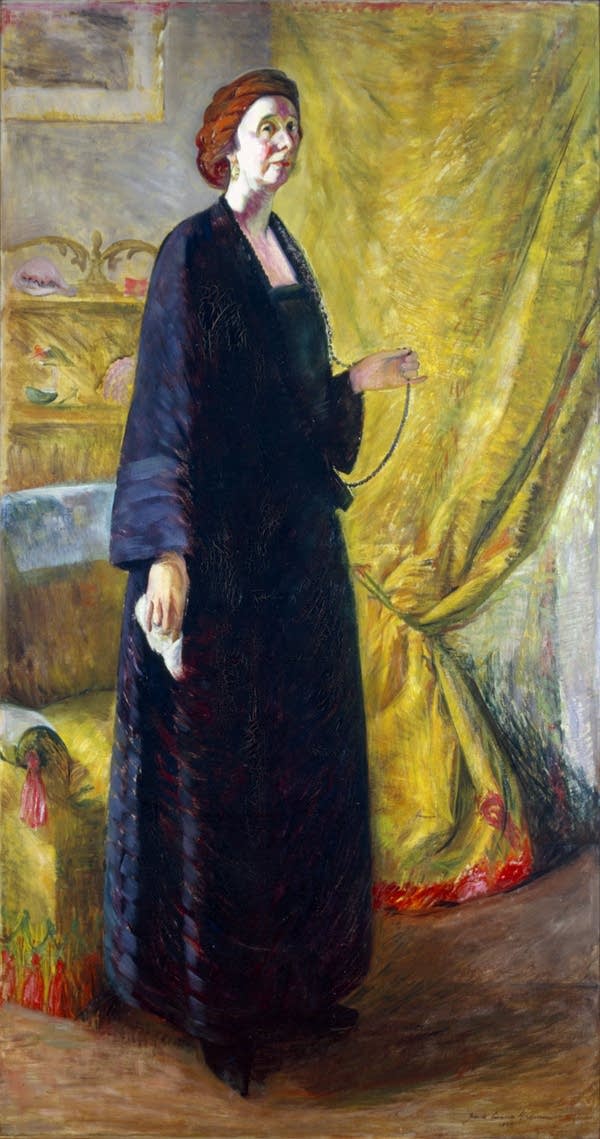These pioneer painters wore long dresses
Go Deeper.
Create an account or log in to save stories.
Like this?
Thanks for liking this story! We have added it to a list of your favorite stories.

What's most surprising about this exhibition is how recently these women painted. They were all born in the late 1800s, and were part of the first generation of Minnesota women to receive professional schooling in art in Europe or New York City.

"For most viewers, these are their grandparents' and great-grandparents' generation," says Brian Szott, curator of art for the Minnesota Historical Society. The Minnesota Museum of American Art invited him to curate this exhibit. "These are women who painted in long dresses and high-collared white blouses," he says.
But many of these women lived long, productive lives; Szott says some did their best work in the 1950s and 60s. One was painting even as late as the 1980s.
"I want people to realize there's this continuous story of art-making," says Szott. "We look at the progress that women make today, but there's been this continuous story of women working against all odds to achieve personal ambition."
Turn Up Your Support
MPR News helps you turn down the noise and build shared understanding. Turn up your support for this public resource and keep trusted journalism accessible to all.

Szott says any story about American women artists involves grit and determination, even today. But this is particularly true of these first Minnesota women. The exhibition, titled "In Her Own Right" focuses on five painters. Minnesota Museum of American Art Curator Theresa Downing says they stood out not only for the strength of their work and the length of their careers but also for their leadership.
"Several of them founded art galleries, artist colonies, they taught in our institutions. So that history--not only their work but their contributions to art-making in Minnesota--is quite compelling," says Downing.

One of those leaders was Frances Cranmer Greenman. Her large portraits capture not only faces, but also personalities. You can see one woman's force of will in her sharp eyes, her pursed lips, and her hands folded not so patiently in her lap. Greenman traveled to Paris and New York to study art and became a successful high society portrait painter. But curator Brian Szott says she and her colleagues worked hard for that status.
"These women were committed first and foremost to their art," says Szott. "Three never married and of the two that did marry, only one had children. So their commitment to this profession was deep-felt and a challenge. They had to give up a lot to be working professional artists."
In her 1954 autobiography "Higher than the Sky," Greenman wrote about her attempts to make ends meet in the wake of the great stock market crash of 1929:

"As I sat on the edge of the bed and listened as John told me over the telephone that the stocks we held were now worthless, I thought 'Get on your horse. Be a portrait painter in earnest again. That's all you are cut out for anyway.' So I got on my horse."
Greenman started calling on New York publishing houses and ad agencies in search of work painting magazine covers or illustrations.
"It was dark and raining," she wrote. "My feet were wet, it was hard to get through the crowds with my umbrella and a canvas--a sample of my work--under my arm. I went from office to office. I didn't miss a one. They all had the same answer: 'No.'"

Eventually Greenman traveled to California and made money painting portraits for Hollywood bigwigs who were still relatively flush with cash. While there are probably several Greenman portraits hanging on the walls of moneyed homes around the Twin Cities, curator Brian Szott says this is the first public exhibit of her work in at least 25 years.
For other painters, such as landscape painter Ada Wolfe, it's been even longer.
"Her work's been mostly dispersed to private collections so its been great to revisit this work," says Szott. "We were able to identify and exhibit work that, to the best of our knowledge, hasn't been seen since the 1940s. So it's refreshing to see her skill and her talent."
Szott says all of these women showed great skill with the brush, whether it's Wolfe's deft rendering of light on familiar Minnesota landscapes or Greenman's insightful portraits. They may not be household names, but Szott says their work merits another look. "In Her Own Right" will be on display through October 28 at the Minnesota Museum of American Art in downtown St. Paul.





